Disclosure: This page may contain affiliate links, meaning we receive a commission if you decide to make a purchase through our links, but this is at no additional cost to you. Please read our disclosure and privacy statement for more info.
When you hear the term cycling, some think of it as a way to stay in shape. What if you take it a step further? Thinking of cycling as a form of transportation. Instead of gassing up your car for the week to make it back and forth to work – consider taking your bike instead. However, when you’re a night shift worker, it’s not as simple as hoping on your bike and heading to work.
Night shift cycling has significant benefits. Health, money savings, no traffic, increased vitamin D exposure and potential mental decompression after a shift. Invest in a bike that is durable, equipped with lights/reflectors and limit distractions (especially if tired).
If you plan on cycling to work regularly, there are a few things you must always check off before starting. Follow along with us as we take a ride into the world of cycling to your shift!
Cycling Benefits on Night Shift
We love our exercise at The Other Shift and cycling plays a big part in it! But outside of what we’ve already listed, what else can ride to work help with?
| Exercise | More Diet Flexibility |
| Escape the heat | Environmentally Conscious |
| Save Money | Witness beautiful sunrises |
| No Traffic Jams | Increased Vitamin D exposure |
| Mental decompression | Helps nights-to-day transition |
| Build stamina and resistance |
Exercise
Cycling to and from work is the best way to get in your daily exercise. Even though cycling is considered to be a low-impact physical activity – it’s still exercise nonetheless. Plus, you’re doing this every day you work – so that adds up over time.
Not only can this cardio help you lose weight, but it can also help strengthen your core muscles. It’s a really great way to stay in shape, especially if you don’t really have the time or money to join a gym. In the case of cycling to work, exercise serves as a two-for-one – as a means of transportation and a form of exercise.
Save money
One of my personal favorite benefits – cycling to work is a magnificent way to save money throughout the month in more ways than one. For starters, the price of gasoline continues to skyrocket. Cycling to work means not having to fill up your tank as regularly.
Aside from having to fill your car up weekly, driving your car too much can cause extensive wear and tear, meaning spending more money to keep it maintained. Fewer miles being driven should allow your car to last you more years than first planned.
Related post: Is The Night Shift Differential Worth It?
No traffic jams
Honestly, one of the worst parts about driving to work is the traffic! Depending on where you live and the time of day you drive, traffic can be pretty heavy on your commute. As night shift workers, we run into those who are getting their wits about them first thing in the morning and rushing into work, when all we want to do is get home to bed.
Biking eliminates getting caught in a traffic jam and keeps you from contributing to one as well. Sometimes you may get home sooner than you would if you were traveling home from work in your car. Nobody wants to deal with traffic at the end of a long shift. Skip all the traffic by cycling!
Whilst on the topic of driving, this post will help you get home safely.

Escape the heat
This one is for people who don’t own a car. Night shift work could be your go-to, as if your only way of getting to the office is a bike, you’ll be riding in the much cooler parts of the day. Riding to the office at 9pm in summer and returning home at 6am, seems much nicer than a ride home after a long shift at 5pm. You’ll also avoid dehydration, skin irritation and burns from excessive exposure.
More diet flexibility
On nights, we are often surrounded by candy, chocolate and doughnuts which have either been bought in by ourselves or by a colleague, as we all try and survive night shift with sugar. Now I don’t agree this is a sustainable option and have explained other snacks here, but regular exercise such as cycling does allow us to indulge just that little bit more.
If you’re new to cycling, it can take months to build stamina and strength. Be patient. It’s well worth it.
Environmentally conscious
If more people biked to work, I would like to think the condition of the world would be improved. When you choose to cycle to work you are doing your part in protecting our environment. You’re taking at least one car off of the roadway and from polluting the air.
Witness beautiful sunrises
This is just a major bonus. Once you’ve finished working your night shift, you get to cycle home and see the sunrise. Watching the sunrise has been proven to boost someone’s mood, which you could probably really use after working a long shift that night.
Increased vitamin D exposure
Biking back and forth to work is a great way to get your daily dose of Vitamin D. When you’re in the car you’re not directly exposed to the sunlight. So, you’re not taking in as much Vitamin D as you would if the sun was directly hitting your skin.
As a night shift worker, you’re either going in early enough to where you can catch the sun before work. Or you are getting off so early/late in the morning that you can catch some Vitamin D when you are getting off of work and the sun is rising.
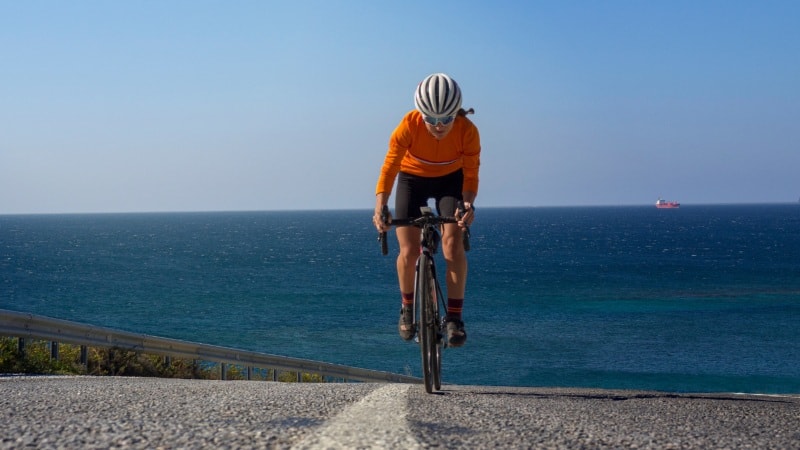
Mental decompression
It can take time to wind down, decompress and process after a shift. Some people need to “talk it out” whilst others benefit from getting their heart pumping and working up a sweat. This can be a really peaceful process for you, allowing for a much better day’s sleep when you get home. (Read more about night shift and self-care here)
Helps with shift transition
Adjusting back to day shift can feel like a hazy fog for some time but riding, even for leisure will help kickstart your body clock back into day mode. Here is a post that will help you adjust even further.
Build stamina and resistance
Though cycling can be physically and mentally exhausting in the beginning, it’s worth the few weeks/months’ sacrifice in building up your fitness and strength. Once I had been riding for some time, it became easier and much more enjoyable. I was fitter in my everyday life and was able to do things without fatigue, pain or exhaustion. Remember to allow your body time to rest and recover though.
Just be really mindful and kind to yourself when sleep-deprived as the ride will defiantly be harder. Consider walking up what hill instead of pushing yourself before you face oncoming traffic.
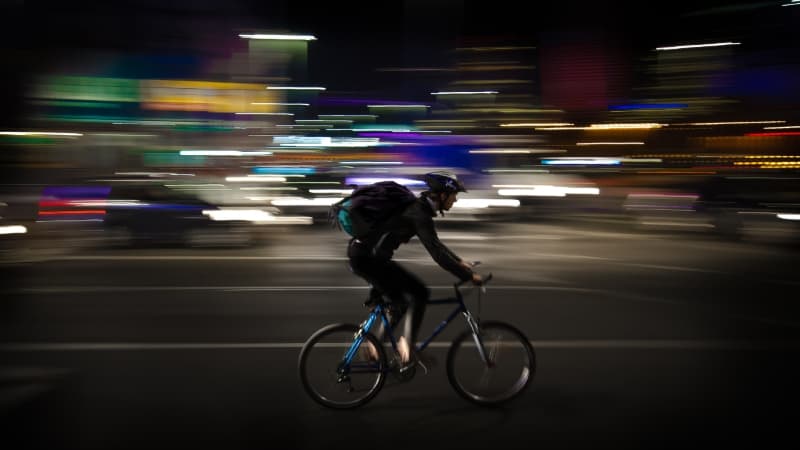
Bike Safety
When it comes to cycling to and from work there are several safety hazards that could come into play. So the first thing I want to cover is how to remain safe while cycling – especially if you’re riding while there is little light out.
Don’t pull off until you’ve done these necessary checks. You don’t want to put yourself or someone else in danger due to a lack of equipment or having something malfunction.
Are you safe to ride?
Before you buckle your helmet and push off the curb, ask yourself honestly – are you awake enough to ride? Has the night shift put you in a groggy haze where you will be a hazard to yourself and others? If yes, is there any other way of getting home? If not, walk your bike for a few minutes to get the blood pumping, take some deep breaths, gulp down some water then try again. Or better yet, nap before you go if you have a safe space to do so.
Some say going really fast helps to keep you awake though don’t blame me if you fall!
Fill up your water bottle
A lot of night shift workers find they are dehydrated once they get home. This is likely due to being constantly busy or distracted, taking as away from remembering to drink. Don’t leave yourself stranded a few miles from home with a dry mouth, as it may lead to headaches and fatigue setting in quickly.
Wear a helmet


Consider a helmet like this one which already has lights attached. Though we recommend a lot of lights, particularly when riding at night, one attached to your helmet is really handy.
You want to have the necessary protection to keep you from causing any trauma to your head. At the blink of an eye, the unthinkable can happen and long-term injuries can be sustained. I say all of that to say this…just wear your helmet. As an ER nurse, I’ve seen what happens when you don’t and it’s not nice.
Fit reflectors
Reflectors. Reflectors. Invest in some reflectors!
You have to remain visible during your entire trip – reflectors are THE best way to accomplish that. When it comes to reflectors, you want to make sure you have a white one in the front and a red one in the back.
Reflectors’ use is in the name – they reflect light back to the direction from which it came. So, if there is a headlight coming at you, that light is going to bounce back and let them know that you are on the roadway with them.
Just because you have reflectors does not mean you get to skip out on bike lights. You need to use the two together to bring more awareness to your presence. Consider reflectors on your clothing as well.
Here are a few on Amazon to explore
Use lights
I cannot stress this enough – especially for those of you who work the night shift – get yourself adequate bike lights. One thing you don’t want to do while cycling is go unnoticed. Going unnoticed increases the chance of you being involved in an accident.
Lights increase your visibility significantly. I would even go as far as suggesting that you keep them on during the day. So, don’t skip out on good lighting. There are several brands out there that are very durable and pretty inexpensive. If you go to Amazon and type in bike lights, you’ll get to search for an array of bike lights that will get the job done.


Anticipate the weather
We all know that the weather is unpredictable. My greatest advice to you is to check the weather forecast the day before you decide to bike to work. If it’s raining, thundering, and lightning – maybe find an alternate form of transportation that day. I know that some people may not have a choice but to cycle to work, however, you don’t want to put yourself at risk either.
If you fall under that category – phone a friend and see if they can give you a ride. Or you can take the bus or call for an uber. Whatever you do – always put your safety first and think about your wet feet all day!
Lock it up
Another safety element to consider is where your bike will be stored both at work and at home. Does your workplace allow for bikes to be stored indoors or within a locked bike cage? Once at home, do you have a garage or storage cage or will it become a new part of the decor within the apartment? Don’t let a storage surprise spoil the fun of riding.
I have tried so many bike locks in the past, but the one I have settled on due to ease and durability is a folding bike lock. This one isn’t exactly what I’ve got but it’s pretty similar and is mounted onto my bike frame. Highly recommend something like this.


Limit distractions
Do you wear headphones when you ride? Though it may help motivate you to get home, when tired you may rely on the sounds around you to keep you safe more than before. Consider opting out of wearing headphones of any kind and instead use a device like this to mount your phone and use the speaker to play some beats.
Remember, you are just as likely to be involved in an accident as anyone else that you’re sharing the road with. When you’re cycling, focus on just that. The only thing that you should be worried about is paying attention to your route and the traffic that surrounds you. I know I sound bossy, but I don’t want you to get hit!

Sleep & Cycling on Night Shift
Here’s a fun fact. Did you know that moderate aerobic exercises have been directly linked to deeper sleep? Guess what is considered an aerobic exercise – Cycling!
Though this statistic may be accurate for some people, for others, exercising really close to bed is linked to worse sleep because you’re too wired (as exercise releases a number of endorphins strong enough to keep your brain wired if you try to go to sleep too soon).
If you fall into the later, try enjoying some breakfast once you get home such as porridge/oats, have a shower and slide on some blue light blocking glasses to get your brain in tune with sleep. Regardless of if I do exercise or not after a night shift, I try and be asleep within 30 minutes – 1 hour of arriving home.
Whatever you do, you need to be strategic about when you sleep after cycling. This video will help explore this idea a little more.
Speaking of sleep. Let’s go into ways to ensure that you’ve got the perfect sleeping quarters to get adequate sleep. Adequate sleep is essential if you’re going to cycle each day to and from work.
Your body is going to suffer from some wear and tear when you cycle daily. Therefore, you need to allow your body to rest and heal at night. Here are some tips for preparing your sleeping arrangements!
Relax
I always find it difficult to get straight home and go to sleep. My brain is always wired directly after a shift. So, take the time to decompress before jumping into bed. I would say give yourself at least an hour. Maybe soak in a hot bath after you’ve cycled all the way home. Then once you’ve decompressed and washed the night away – then get ready for bed.
Dark environment
This is so essential for night shift workers. As we’ve stated in numerous blogs before, our bodies operate on an internal clock. When you work the night shift you’re turning that clock on its head. Your body wants to sleep at night and be wide awake during the day. Therefore, you need to create a dark place to “trick” your body into thinking it is nighttime. If not, your sleep schedule is going to struggle significantly.
A great way to create a dark environment is to invest in some blackout curtains. The right blackout curtains can really create a pitch-black environment (These are pretty nifty). If you’re looking for a cheaper alternative – consider investing in an eye mask such as Manta which I’m wearing below.
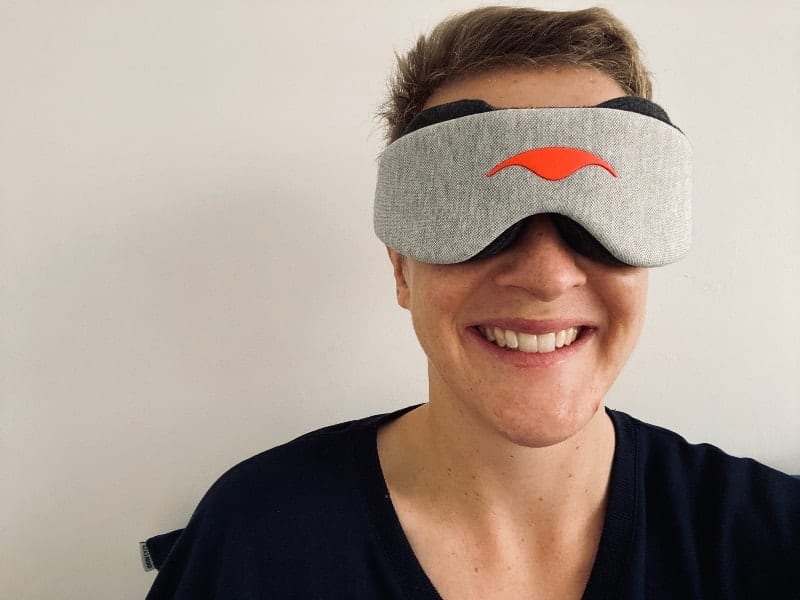
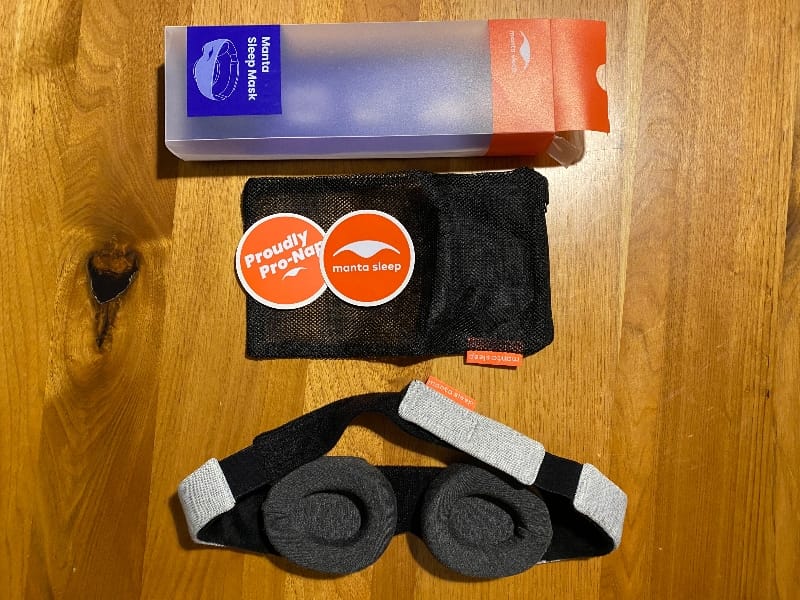
Set the temperature
Everyone knows that the temperature in a room can make or break a good sleeping night! The important thing is to know yourself. What I mean by that is the only person who can tell you a good sleeping temperature for yourself is you. Our body temperature drops while we sleep. So, some people may get cooler than others and want warmth while they sleep. Others prefer the cold. Whatever works for you – do that.
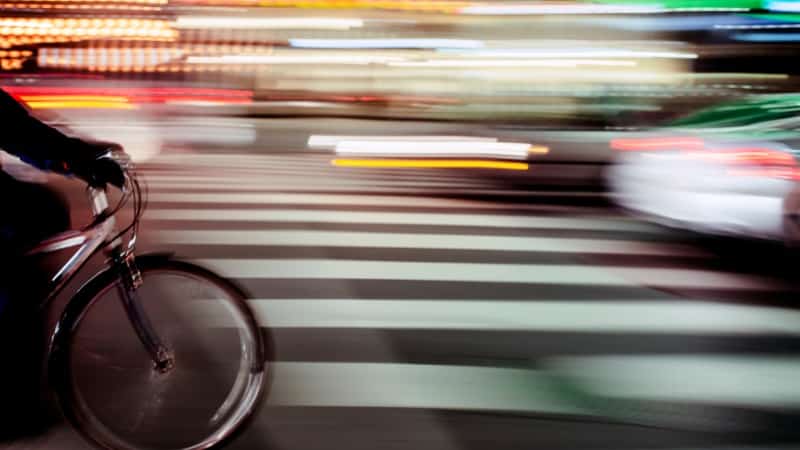
If you were feeling skeptical about cycling to work each day, hopefully, we’ve helped you determine whether or not it’s the right decision for you.
When you are cycling we want you to be as safe as possible. Freak accidents happen all of the time – you don’t want to be a statistic. We’ve given you some of the top safety tips, however, there are plenty of other tips that you can adopt. Be sure to look up some more tips to be fully prepared. While there are some things to watch out for, the benefits you could reap transcend any of that.
Happy ridding.
Next up, we talk about considering your commute to work in this post titled, Sleep During the Day, Work at Night: 12 Secrets for Success. It flows nicely from this one, giving you a range of unique tips for working overnight.

Disclosure: This page may contain affiliate links, meaning we receive a commission if you decide to make a purchase through our links, but this is at no additional cost to you. Please read our disclosure and privacy statement for more info.
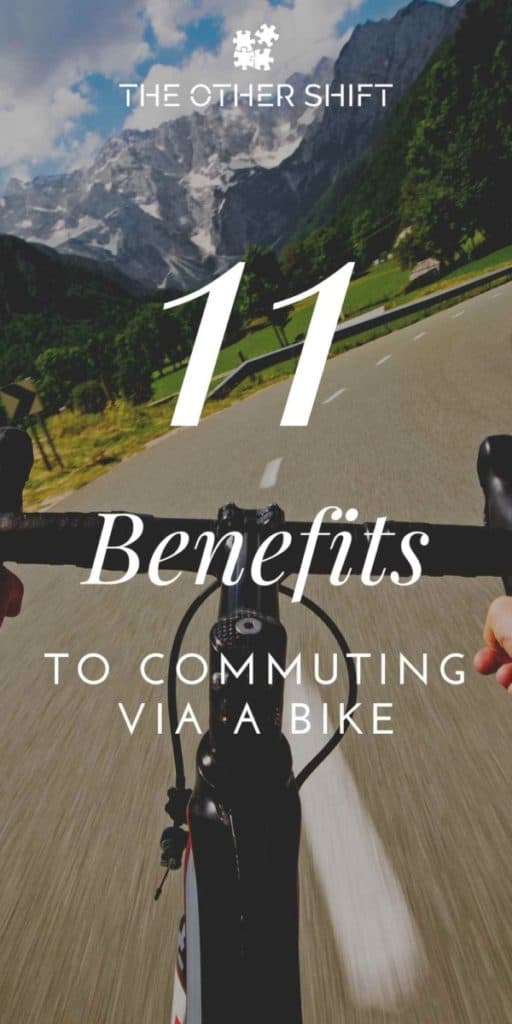
Recent Posts
An examination of the night shift professions, that while sometimes underappreciated, are necessary for civilization, in its current form, to exist. A city can be thought of as a machine. Each...
Culminated from an exhaustive yet well-funded journey into the night, this article will prepare you for life outside of work while being a denizen of the dark. During days off, night shift...

